
- For PC
- For MAC
- For Linux
- OS: Windows 10 (64 bit)
- Processor: Dual-Core 2.2 GHz
- Memory: 4GB
- Video Card: DirectX 11 level video card: AMD Radeon 77XX / NVIDIA GeForce GTX 660. The minimum supported resolution for the game is 720p.
- Network: Broadband Internet connection
- Hard Drive: 22.1 GB (Minimal client)
- OS: Windows 10/11 (64 bit)
- Processor: Intel Core i5 or Ryzen 5 3600 and better
- Memory: 16 GB and more
- Video Card: DirectX 11 level video card or higher and drivers: Nvidia GeForce 1060 and higher, Radeon RX 570 and higher
- Network: Broadband Internet connection
- Hard Drive: 62.2 GB (Full client)
- OS: Mac OS Big Sur 11.0 or newer
- Processor: Core i5, minimum 2.2GHz (Intel Xeon is not supported)
- Memory: 6 GB
- Video Card: Intel Iris Pro 5200 (Mac), or analog from AMD/Nvidia for Mac. Minimum supported resolution for the game is 720p with Metal support.
- Network: Broadband Internet connection
- Hard Drive: 22.1 GB (Minimal client)
- OS: Mac OS Big Sur 11.0 or newer
- Processor: Core i7 (Intel Xeon is not supported)
- Memory: 8 GB
- Video Card: Radeon Vega II or higher with Metal support.
- Network: Broadband Internet connection
- Hard Drive: 62.2 GB (Full client)
- OS: Most modern 64bit Linux distributions
- Processor: Dual-Core 2.4 GHz
- Memory: 4 GB
- Video Card: NVIDIA 660 with latest proprietary drivers (not older than 6 months) / similar AMD with latest proprietary drivers (not older than 6 months; the minimum supported resolution for the game is 720p) with Vulkan support.
- Network: Broadband Internet connection
- Hard Drive: 22.1 GB (Minimal client)
- OS: Ubuntu 20.04 64bit
- Processor: Intel Core i7
- Memory: 16 GB
- Video Card: NVIDIA 1060 with latest proprietary drivers (not older than 6 months) / similar AMD (Radeon RX 570) with latest proprietary drivers (not older than 6 months) with Vulkan support.
- Network: Broadband Internet connection
- Hard Drive: 62.2 GB (Full client)
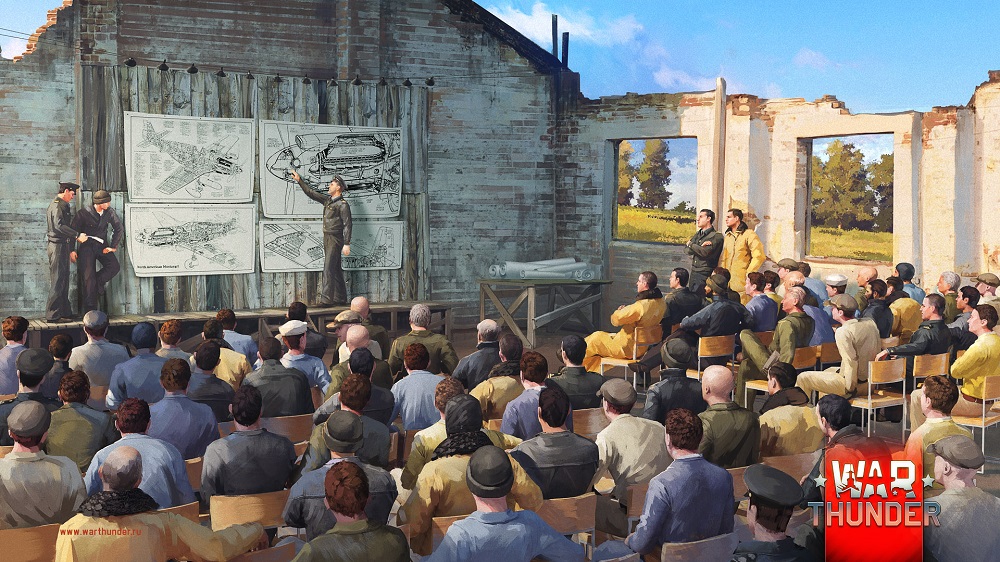
Dear players,
We had questions from the community about the improved ballistic system update and today, War Thunder producer Vyacheslav Bulannikov is going to answer the most popular in this Q&A.
Q. Is the new system going to affect HESH shells? If yes, how?
A. These changes do not apply to any HE, HESH or HEAT shells.
Q. Have you planned an update to the ricochet system? Sometimes larger shells ricochet off very light vehicles.
A. A ricochet at a given angle and range (you can check it in the ammo info card) is possible when the round calibre/armour thickness ratio is lower than 7. If the ratio is 7 or higher the armour is broken. We do not plan to review this system or make it more complex at the moment.
Q. What about the hardness of the material used in a shell? All kinds of different materials were made with varying degrees of hardness through out time.
A. Material hardness will not be taken into account in calibre type projectiles since this parameter could be really different. Depending on the time of production, hardness could vary greatly for the same round type and choosing specific values would not be accurate. However hardness (density) of the core for such rounds as the APFSDS will be taken into account.
Q. Are there any plans to change the penetration system concurrently? Shells are 1 pixel wide in game, so they can go through tiny armour gaps, for example a 152mm shell can fit in a 10mm armour hole.
A. That’s a complex and non-trivial task, we studied possible variants several times and at the moment we haven't found the one that meets all the requirements. Perhaps we will come back to it in the future, at the moment we use the method that is most widely used in games.
Q. Will document sources contradicting the results of the formula be discarded even if there is no contradiction with other documents, or could there be exceptions in the system? I know you mentioned APDS, was wondering if other shells might also be excluded in some cases.
A. Exceptions are a rare case, where no other methods allow us to gather the correct data about the round. Differences of the penetration data in different sources are not enough to add a round to an “exception list”. One of the purposes of this method is to exclude incoherence in data from various sources, otherwise penetration values will be constantly changed.
Q. Have you any plans to improve HEAT ricochets? In many case, HEAT projectiles should not ricochet, but either break or detonate. Many HEAT shells are too fragile to stay intact after a ricochet.
A. HEAT rounds can ricochet at high angles of impact, the specific angle depends on the fuse design. Of course, a round can be destroyed after impact and this is implemented in our game, after ricochet, a round loses its stability and can self-detonate.
Here is the data on the V-15 fuse for HEAT rounds. As you can see the angle is 0 to 70 degrees.
Q. Is there any plans to have the same system for aircraft guns? It’s really hard to understand how the munitions really perform, and even harder to know if they perform correctly.
A. For high-calibre guns that use similar rounds to tank rounds - yes.
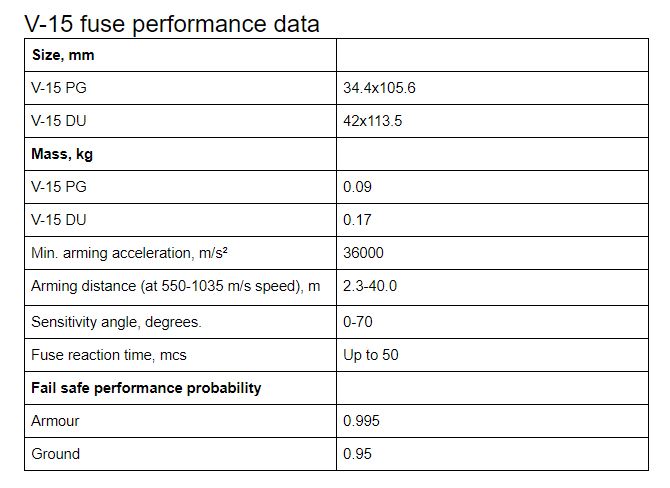
Q. How about the APHEBC? (a shell type some russian guns use). Is it going to be the same as APBC/APCBC now? It has had weird characteristics for years.
A. The slope effects for these rounds will also be implemented as they were for the APBC Shell.
Q. Japanese tanks guns performance took a hit with this new system. What have you planned in this regard?
A. BR changes will be made where they are required, this affects all nations, not just Japanese.
Q. How is penetration calculated? What are the mechanics for the rounds with different cap shapes?
A. Cap shape affects armour penetration at specific angles and this is taken into account in the slope effect sheet. To get penetration value at a specific angle you should divide armour thickness by slope value for the required angle.
Q. Do these formulas apply to low-calibre aircraft weapons?
A. At the moment, we have not considered applying the formula to low-calibre MGs.
Q. Rounds of the same type and calibre may have different penetration, will it affect the calculation?
A. If these rounds have different parameters affecting penetration - mass, velocity, HE mass etc - this will affect calculation results.
Q. Can you show us the exact formula where penetration is calculated? It is unclear where we should use the mass of a core and where the mass of a round is used.
A. In the future the exact characteristics of the rounds will be shown in the War Thunder Wiki directly from the game in articles specifically for guns.
Q. De Marre’s formula does not take explosive mass into account, but using your calculator one notices that final penetration value is not linear in reference to explosive mass. Are these some kind of hidden parameters?
A. Indeed, De Marre’s formula does not take explosive mass into account, that’s why we used data from AaG that allowed us to formulate penetration value reduction depending on the filling coefficient and added explosive mass as one of the coefficients to the formula. Taking explosives into account allows us to calculate penetration value more accurately - rounds with higher filling coefficient have lower penetration values. The exact values are not hidden, you can see them below.
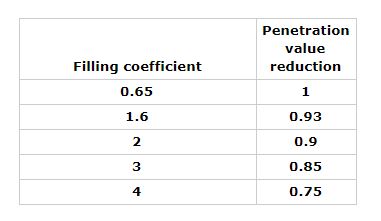
The War Thunder Team


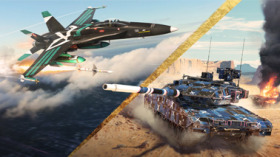
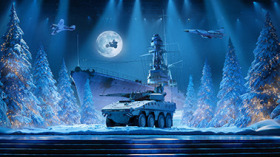
Comments (186)
What's even the point of those changes? Official documentations are more reliable source than some calculaton formulas.
fun and engaging game play to make Solid shot on par with Sabot
It's easier to understand, to uniformize over the entire game and it limit errors or subjectivity. Sources has always been problematic, we had thousand pages of discussions in the forum on sources validity, and our team went though countless documents to get the game were it is - problem, we always have a lot of conflicting documents, sometime missing data needed for an accurate model, sometime the math simply not adding up. This update will make the system easier to understand for the players, easier to maintain for the devs and should not affect realism, overall.
I still dont understand why are you doing this, the game already has plenty of problems that are not being fixed like spawn protection,uptiering whole team(like 6.7 team fighting 7.7), balance isues, map isues, so why you want to add more problems the only shells that should have been touched is apds and aphebc, this can easily kill the game if half of tanks will be ruined, and btw shanging brs wont help because already so many vehichles for years half bad brs like m42 at 6.7 and m19 5.0
My feeling is they're maybe planning the next tier of modern tanks? Those DU rounds ect have 900+ mm pen values, I dunno really, it doesn't make sense..
EricH1983, Yup. Typical Gaijin : already planning to add more broken stuff without fixing current issues...
"Not taking into account the shell material hardness"... What? Really?
itd make getting pen values much harder, if you had 2 of the same shell but one was better made than the other, which do you use as the shell in the game? it makes pen values easier to calculate.
WT_CT_Center, simple the shell that was the more produced even if its the lower quality one
People were asking for a fix for literally everything else than the APHE, as the APHE was pretty much balanced already. Except for the APHEBC with its odd angled values. Going purely on a formula is far from even attempting for realism. Practical tests exist for a reason, and the data should be respected.
+
Practical testing was done under different conditions (especially during a pre-WW2) - there was no reason to unify the standards between countries. Which means, even if we take original sources literally, the shell performance will vary. What will you do if two accurate sources contradict each other (regular problem)? The problematics goes much deeper. We have over 1,200 vehicles in the game from cca 10 countries. We need to unify the standards if we want to deliver accurate ballistics results.
Japanese tanks are utterly mutilated with these changes due to the fact that the penetration values were incorrect to begin with. Applying the formula to already incorrect values is going to make them even worse than they should be. Expect a plethora of bug reports on false data and misrepresentation of practical tests.
Plus the whole thing that Japan supposedly had Tungsten-Chromium shells for 47 and 75mm guns, with improved penetration. Something these formulas are going to dismiss because it doesnt take into account the steel alloy hardness/toughness.
BuffDrinkLots, It's a complete joke. The 37mm guns were already wrong - now they're going to be even MORE wrong. The low velocity cannons (57mm, 70mm, 75mm) are also going to be impossible to use.
Nice gaijin, i can see that you want to make russia great again. So if the 3BM9 is getting a buff, i think other will be biased too, like the 3BM22 for example, while M774 will be worse than M735 before the change. Now will you give me HISTORICAL AMMO FOR MY IP?!
bad news the new calculation would render DU near useless
Haven't we learned nothing over the last 5 years, this how gaijin works its all fine until ''balance'' of a certain country is affected, then documents are found and changes are made..
This is the beginning of the end. If is isn't broke, don't fix it. I understand that you want to introduce rounds into the game that have no testing data whatsoever, but changing every round in game just for the sake of a few modern vehicles is asinine. Just come out and say that we will only be using the formula on modern stuff, end of story.
ho look at that, russians are the only one who got a buff, lucky!
It must have taken a lot of mental gymnastics for them to come up with a calculation that ONLY favored Russian ammo. I'm sure it wasn't by design.LOL
I think this "calculator" is more like a "nerf mechanic". -Ohh, US has 75%+ win rate, lets recalculate their shells with this awesome new calculator-
USSR has low win rate at top tier so lets ruing gameplay for every br, same thing hapened with mbt70 and kpz70, they where too good so now germany and usa cant be in one team, but when is6 and t29 where stomping tigers back few years ago everything was OK
Even if so, its warranted. US top tier performance is destroying top tier gameplay. I wish people would stop for a fucking second and realize this is a game and it requires balance.
Bro HEAT rounds go off if they hit a leaf on a Bush In game, but if it hits slanted steel it bounces?
Also they detonate on fences of every kind even if it barely touches it.
Submit a complaint